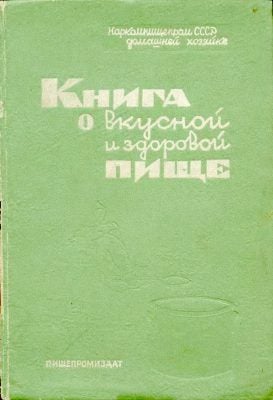Limited ingredients. Shortages. State control. Home cooking in the USSR could be a frustrating endeavor, and like everything else in Soviet life, the state tried to dictate it. But though the Soviet Union attempted to shape food preferences and traditions and control what and how cooks prepared at home, it didn’t keep citizens from finding interesting, and even extremely tasty, options that created plenty from privation. Maria Pirogovskaya digs in to the history of the handwritten cookbooks that kept Soviet bellies happy, if not entirely full.
Pirogovskaya sees these cookbooks—homegrown documents passed from cook to cook—as powerful cultural documents that afforded their owners valuable social capital. With the help of thirty-two interviews and archival materials from both family and academic archives, she was able to trace their significance and rich history.
The books grew from radical shifts in Eastern Europe during the nineteenth century, when literacy rose and the hold the gentry had on a large majority of the region began slipping. As the longstanding political order was shaken by revolution, the bourgeoisie went from roles overseeing large numbers of servants and the production and running of big homes to navigating smaller spaces in urban environments. Dining was seen as a critical part of Soviet society, with the table a literal gathering place where the classes could meet.

Housewives’ notes were soon replaced by official government cookbooks, but those didn’t make for good eating—or even feasible cooking. The recipes in socialist cookbooks didn’t reflect reality: that ingredients were in short supply or nonexistent, goods were often only available to elites, and people simply didn’t have enough time to make them. The recipes also served to flatten the diversity of cultures within the USSR and disappear ethnicity and religion—both essential ingredients in good food for some. Instead of an idealized “official quasi-reality,” Pirogovskaya writes, Soviet cooks relied on an “invisible cuisine” that benefited from, and conferred, the social capital one needed to survive.
Yet Soviets found ways to eat anyway, and the unofficial cookbooks helped supplement the excellent memories of home cooks who knew by heart important dishes within their many culinary traditions. “[P]rivate, informal, and practically invisible,” these handwritten documents helped cooks cobble together meals out of what seemed like thin air, repurposing available ingredients in a kind of “bricolage.”
Weekly Newsletter
Interviewees told Pirogovskaya that women in particular took great pride in solving seemingly insurmountable cooking problems, especially for holidays when “prestigious dishes had to be constructed out of ordinary alimentary goods, and complex tastes out of common products.” They traded handwritten recipes and shared food in a complex and socially layered process of give and take, using hospitality as a way to survive. Through “gastronomical small talk” with acquaintances and even strangers, they learned new tactics; by asking to copy a hostess’s recipes for homecooked meals, they conveyed respect. Refusing to share a recipe was unthinkable.
In a society in which inequality and want were omnipresent but never overtly recognized, people relied on one another for mutual support. Their dishes may not have been able to mimic official standards of cuisine, but Pirogovskaya’s work suggests that the exchange of recipes and cultural cachet made for more community solidarity than a government ever could. This was the true, if unofficial, cuisine of the Soviet Union—warm, unique, and mutually supportive, even in the face of a totalitarian regime.







